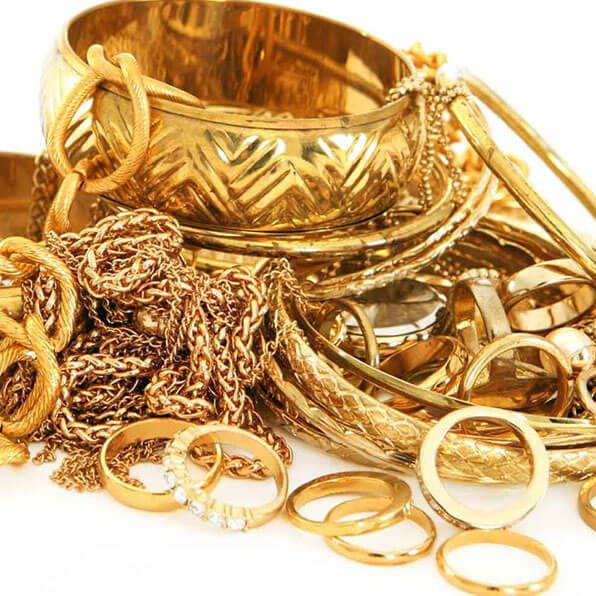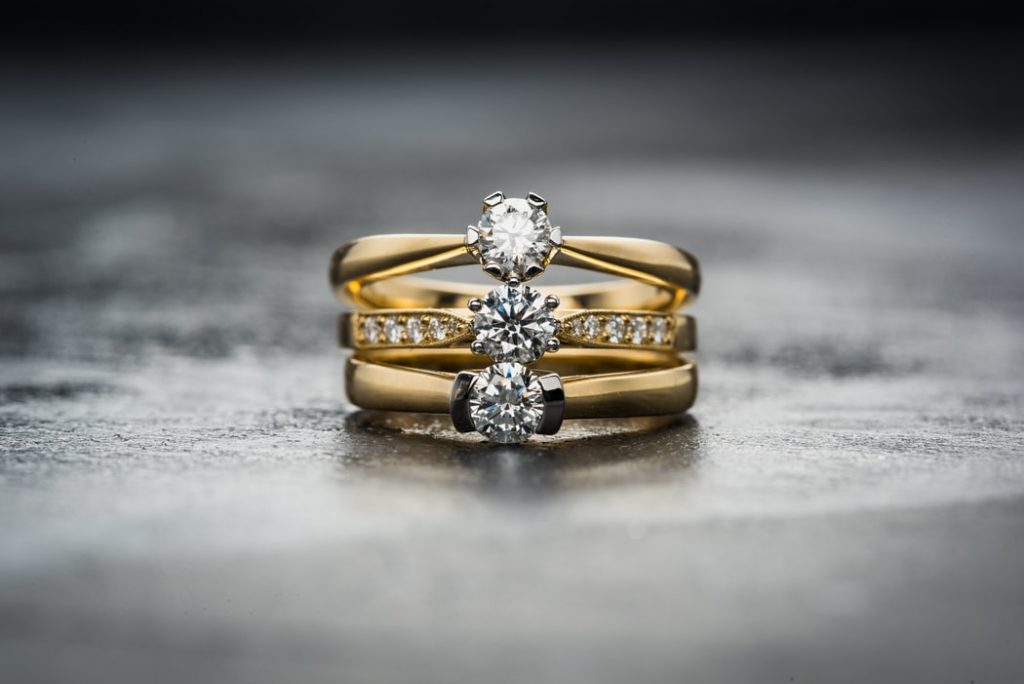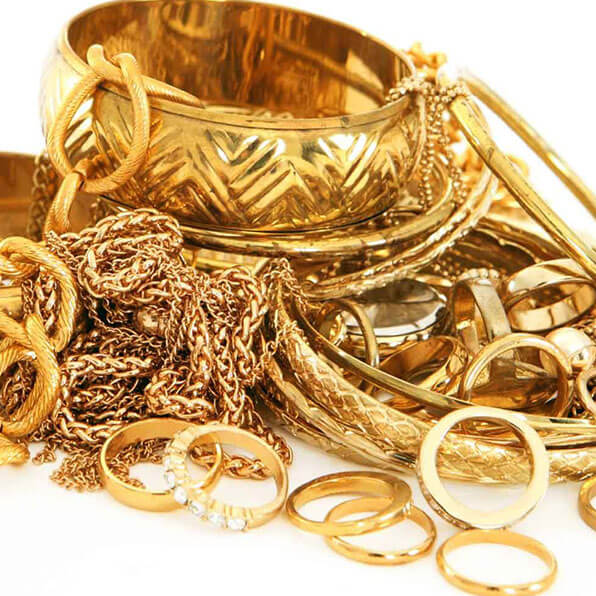How Do Jewelers Test Gold?

Gold is a valuable substance, although several factors impact its total value. A question that often comes up is how jewelers test gold and determine its value, which is a process that involves making several key assessments. Learn more about this process and the testing involved to determine the value of gold. How Is the Purity of Gold Determined? You have probably heard of the most widely used purity measure for gold, which is karat. When someone refers to a piece of gold jewelry, they indicate its karat rating to show how pure it is. The karat scale goes from zero to 24, so when a piece of gold has one karat, it includes one part real gold, and the other 23 parts are made of different types of metal or alloys. An 18-karat ring would include 18 parts of real gold and six parts of other types of metal. You can further break down the scale into parts per thousand, or the percentage of real gold to alloy or other metal. Simply divide the number of karats of your gold by 24, and then multiply that number by 100. A 20-karat gold necklace would be 83.3% gold, which you’d find by dividing 20 by 24 to get 0.833, and then multiplying that by 100 gives you the percentage. In other words, a 20-karat piece of jewelry has 833 parts of gold for every 1,000 parts. How Do You Determine the Karat Rating of a Piece of Gold? A jeweler can typically look at a piece of gold jewelry and find the marking that indicates its karat rating. Most gold jewelry manufacturers include a small indicator on the pieces they produce. A stamp on the piece indicates its karat, although depending on where it was made, the numbers may look different. For example, in Europe, the rating often indicates parts per thousand, so the stamp will show a three-digit number rather than a number within the 0 – 24 scale. If your stamp includes the number “500,” this would indicate that 500 parts per every 1,000 are real gold, while the other 500 parts are other metals or alloys, meaning it’s 50% gold. You can find the two-digit karat number by dividing by 1,000 and then multiplying that by 24. The 500-gold piece example would be rated at 12 karats. The highest three-digit rating you’ll see on a piece of gold is 999, which indicates 24 karats. What If a Gold Piece Doesn’t Include a Karat Mark? In some cases, gold pieces won’t include stamps or other markings to indicate their karat rating. In the U.S., the National Stamping Act of 1906 (amended in 1961) requires that jewelry sold by vendors include a stamp with a karat marking, but this isn’t the case in all areas of the world. If this is the case with your piece, a jeweler can perform an in-person test to determine its value. The most commonly used test is with nitric acid, which is a corrosive and colorless mineral acid. This acid reacts with many different materials, including copper-based alloys. When a piece of metal has a high concentration of copper, the reaction between it and the nitric acid is more powerful. Counterfeit gold pieces are generally copper-based, often including materials like tin and copper. Nitric acid also reacts to gold with a low karat rating, although the reaction isn’t as strong as it is to copper-based material. In a nitric acid test, a jeweler places a few drops of the acid on the piece and watches the reaction. With copper, the reaction usually causes the liquid to turn green, give off fumes, and sometimes bubble. This response is known as a hard cupric reaction and indicates that your piece is not real gold. Lower-karat gold pieces may produce a mild cupric reaction, which includes minimal to no fumes, no color change, and little to no bubbling. You may see a small black mark where the acid came into contact with the piece. Nitric acid does not react to gold that’s 12 karats and above, nor does it react to stainless steel, zinc, tungsten, aluminum, platinum, or palladium. However, some gold pieces are plated, meaning the outside is gold while the core is another type of metal, so jewelers often test the core to make a better determination on the value. How To Tell if Gold is Real / How to Jewelers Test Gold at Home? Counterfeit gold is common, so it’s helpful to understand some of the properties of this precious metal to determine whether your piece is in fact real gold. The first is that gold is not magnetic, so if you notice that your jewelry or bar jumps toward a magnetic surface, it is not real. Gold also doesn’t corrode or tarnish, unlike aluminum, copper, silver, and brass. Therefore, if you notice any oxidation on your gold piece, it is not completely gold. Another simple method is the float test. Drop your piece into a glass of water. If it sinks quickly, it’s more likely to be real gold since gold has a higher density than other metals. However, some metals that can pass for gold are also heavy, so this is a good test to try in conjunction with others. The scratch test is a great way to determine if your jewelry is real gold, but it can damage your piece, so be careful. To perform this test, rub your gold against a piece of unglazed ceramic or porcelain. If the mark left is gold-colored, your piece is very likely real gold. If the mark is black, the piece is not real. If you have gold and are interested in selling it, you may be able to earn a profit on this highly valuable material. The value of gold fluctuates, but it’s been a valuable metal for centuries. To sell gold or learn more about the process, our team at Wulf Diamond Jewelers is here to help. For nearly five decades, we’ve built our reputation as
Investing in Diamonds vs. Gold: Which Choice Is Best?

Along with being timeless keepsakes, diamonds vs. gold can have quite a bit of value. Many investors find diamonds and gold to be safe and smart investments. Although both diamonds and gold can give you a good return, it’s important to make sure you understand what investing in them entails. Learn the answers to some of the most frequently asked questions about investing in diamonds and gold. What Is Commodity Investing? A common type of commodity investing is when you purchase physical raw commodities and plan to sell them later. Different types of investment commodities include metals, energy, livestock and meat, and agriculture. When investing in commodities, you should plan for different variables such as economic developments and innovations. For instance, when investing in gold, you should pay attention to current currency rates and trends. What Are the Benefits of Commodity Investing? Unlike money, commodities tend to be safer during times of economic uncertainty. That’s because precious metals, such as gold, tend to be reliable despite volatile stock markets. Likewise, your gold assets may be more valuable during periods of high inflation. One thing to keep in mind is that commodities can be risky investments since their prices fluctuate. When you sell your gold at the right time, you may get a nice return. Another benefit is that you can easily hold onto gold until it becomes more valuable. What Are Key Factors for Investing in Diamonds vs. Gold? When considering investing in diamonds or gold, there is no simple answer to which option is better. It truly depends on your personal preferences and financial background. When investing in diamonds, consider the following factors: Consider these factors when investing in gold: What Is Worth More: Diamonds or Gold? Whether gold or diamonds are worth more depends on a variety of factors. First of all, there is no set price for either of these assets since the demand for both constantly fluctuates. Gold tends to be a safe investment since it is known to withstand inflation and has a reliable return. In certain parts of the world, gold is considered a form of currency, which is not true for diamonds. In this sense, gold could be worth more than diamonds. On the other hand, diamonds often have a better resale value, making them worth more when considering this factor. The key is investing in quality diamonds that rank favorably in each of the 4 C’s. When purchasing diamonds, make sure you are working with a reliable retailer who is willing to give you an honest and fair price. What Are the Pros and Cons of Investing in Gold? When investing in gold, there are pros and cons. One advantage is that gold is protected from market risks such as political conflict, terrorism, trade wars, and cyber threats. Gold tends to be safe from inflation, and it holds its value for long periods of time. When purchasing gold coins, it’s relatively easy to sell them later on. One challenge you may face is verifying rare or old gold assets. Another drawback may be storing gold coins and bullion. Before investing, make sure you have a secure safe that can fit your gold. What Are the Pros and Cons of Investing in Diamonds? Diamonds can be a great commodity investment for a variety of reasons. One obvious reason is that diamonds don’t take up much space. You can easily store them in your jewelry box or a small safe. When you’re ready to sell your diamonds, you can easily transport them. Another benefit is that diamonds are quite durable. Unlike many other precious gems, diamonds don’t break or wear down easily. That’s because they’re the hardest naturally occurring substance on Earth. When you invest in diamonds, you can also enjoy your investment. You could wear them in different jewelry, like rings, earrings, or necklaces. You can also appreciate that diamonds are a tangible item you can hold in your hand, unlike most investments that are just numbers on a screen. Diamonds are also inflation-proof, making them a safer investment choice during uncertain economic times. The value of diamonds is not known to decrease. However, there are a lot of factors to consider. (read Why Are Diamonds So Expensive? [And Worth The Price!]) Now that you know a little more about investing in gold and diamonds, you can see that both of these commodities have many benefits and some drawbacks to consider. You may decide that one option better suits your situation or that investing in both gold and diamonds allows you to get the best of both worlds. When you’re ready to buy or sell any gold or diamond assets, Wulf Diamond Jewelers has you covered. You might also like:
Is Gold Magnetic?

When looking at your gold coins, rings, earrings, necklaces, and other gold jewelry, one may wonder if they are magnetic. Although the simple answer is no, there is more to whether is gold magnetic. Learn more about the magnetism of this precious metal. Related post: Is platinum magnetic: why is my platinum jewelry sticking to magnets and other questions about Platinum Jewelry Can Gold Stick to a Magnet? Pure gold on its own cannot stick to a magnet. However, if you have an alloy of gold, then it could stick to a magnet. An example of a gold alloy that may stick to a is gold magnetic with over 20% of its atoms replaced by iron. In very cold temperatures this alloy of gold may magnetize all on its own. Will gold of different karats stick to a magnet? Gold jewelry, such as 18k gold, 14k gold, 10k gold, and even white gold can be magnetic depending on the alloys, or metals combined with gold, used. If you think your gold coins or jewelry are pure gold, you can put them to the test by seeing if they are magnetic. If they stick to another metal, there’s a good chance your gold item isn’t pure gold. Instead, it may have iron or nickel inside of it. Keep in mind that although it isn’t magnetic, it still may not be pure gold. You may have a piece made of copper, lead, or aluminum with a gold coating. Can You Make Gold Magnetic? Although pure gold is not magnetic all on its own, there is a way to make it temporarily magnet. You can do this by placing it in a strong magnetic field. Within this magnetic field, the gold can become slightly magnetic. Since we don’t encounter such strong magnetic fields in our everyday lives, it’s safe to say that pure gold is not magnetic. Why Do Jewelers Add Other Metals to Gold? Since pure gold is a soft and malleable metal, jewelers often mix other precious metals with it to make the jewelry more durable, harder, and less likely to bend and scratch. They may also mix other metals such as platinum, copper, or nickel to give the piece of jewelry a different color. Is Silver Magnetic? Like gold, silver is not magnetic. You can use a similar process of placing it in a strong magnetic field to make it slightly magnetic. Knowing that silver is typically not is gold magnetic can help you determine if you have real silver. If it sticks to a magnet, then it is some other kind of metal. What Kind of Metals Are Magnetic? When these metals are combined with gold, it may make the piece (gold jewelry or gold bullion/nugget) magnetic. What metals are attracted to magnets? Cobalt, iron, nickel, neodymium, samarium, and gadolinium are all magnetic metals. Cobalt is commonly used in aircraft engine parts, batteries, and coloring for ceramics and glasses. Iron is used to make steel for manufacturing and construction. Nickel is typically used to plate other metals to avoid corrosion. You may see it in coins or jewelry. Many manufacturers use it to make alloys such as stainless steel that is used for household appliances. Read: Choosing the Best Metal for your Wedding Bands or Engagement Ring One of the most common uses for neodymium is in an alloy with boron and iron to make permanent magnets. A permanent magnet is a magnet that keeps its magnetic properties without a current or inducing field. You may find them in mobile phones, microphones, electronic instruments, and loudspeakers. Samarium is often combined with cobalt to make incredibly powerful magnets. They are commonly used in microwave applications since they can stay magnetic at high temperatures. These magnets also made devices such as headphones and personal stereos possible. Gadolinium is quite useful in different alloys. Its common uses are in electronic components, magnets, and data storage disks. Its compounds are also used in magnetic resonance imaging (MRI), especially for the detection of cancerous tumors. What Kind of Metals Are Not Magnetic? In their pure, natural forms, gold, silver, aluminum, copper, brass, and lead are not magnetic. This is because they are all weak metals. Adding iron or steel to these metals can make them stronger and magnetic. Gold is often used in coins, jewelry, electronics, dentistry, aerospace, and awards. You may find silver in jewelry and coins as well. It is also used for tableware, mirrors, and anti-bacterial properties. Aluminum is often used to make cans, kitchen utensils, foils, beer kegs, window frames, and even airplane parts. Copper is of course used for the penny, but you also may find it in electrical equipment since it is known for its conductivity. Brass is the metal of choice for many musical instruments, but it also is used in alloys for the transport of water. Read: Choosing the Best Metal for your Wedding Bands or Engagement Ring (Part 2) Lead used to be used widely in different materials such as paint, hair dyes, and piping. Since the discovery of its toxicity, these uses have long been banned. Today, it is still used in car batteries and to store corrosive liquids. Why Can a Metal Detector Find Gold? Since gold is not magnetic in its pure form, you may wonder how a metal detector finds it. First off, not every type of metal detector can find gold. If your metal detector runs at lower frequencies, it may not find gold due to its low conductivity. However, metal detectors with a high frequency may be able to find gold. This is because gold has better conductivity with high-frequency waves. Although they are quite expensive, multi-frequency and PI-type metal detectors are the best for finding gold. How Do Magnets Work? The science of magnets is a bit complicated, but to put it simply, a magnet is an object that attracts iron and other materials. A magnet can generate a gold is magnetic field around itself. Magnets have two poles, referred to as



